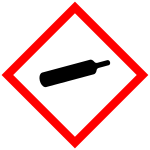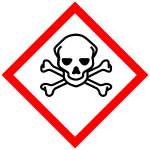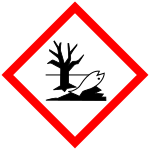Physical hazards

Danger to physical condition
Explosives, mixtures and objects, including those produced to create a practical explosive or pyrotechnic effect. Explosives are substances capable of a chemical reaction with the release of gases at such a temperature and pressure and at such a speed that it causes damage to surrounding objects
Application:
- Unstable explosives
- Explosives, subclasses 1.1, 1.2, 1.3, 1.4
- Self-decomposing chemicals and mixtures, types A, B
- Organic peroxides, types A, B
Examples:
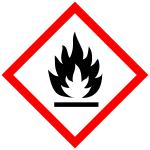
Fire
Flammable gases are considered to have a certain range of flammability with air at 20 ° C and 101.3 kPa. Flammable liquids have an ignition temperature no higher than 93 °C. Solids that can easily catch fire or cause gorenje or maintain gorenje as a result of friction are also flammable.
Application:
- Flammable gases (Class 1), liquids (Classes 1, 2, 3) and solids (Classes 1, 2)
- Aerosols, classes 1, 2
- Self-decomposing chemicals and mixtures, types B, C, D, E, F
- Pyrophoric liquids and solids (Class 1)
- Self-heating chemicals and mixtures, classes 1, 2)
- Chemicals and mixtures that emit flammable gases in contact with water, classes 1, 2, 3
- Organic peroxides, types B, C, D, E, F
Examples:
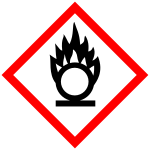
Flame above the circle
Oxidizing substances are those that are not necessarily combustible in themselves, but support gorenje other substances, usually due to the release of oxygen.
Application:
- Oxidizing gases, Class 1
- Oxidizing liquids, classes 1, 2, 3
- Oxidizing solids, Classes 1, 2, 3
Examples:
Hazards to human health
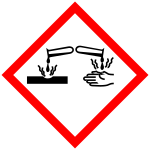
Corrosion
Substances causing the specified harm to health
Application:
- Chemical products that cause skin corrosion/irritation, classes 1A, 1B, 1C
- Chemical products causing serious eye damage/irritation, Class 1
Examples:
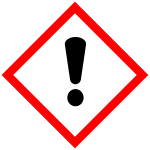
Exclamation mark
SSubstances that cause the specified harm to health, but are less harmful to health.
Application:
- Acute toxicity (oral, skin contact, inhalation exposure), Class 4
- Chemical products that cause skin corrosion/irritation, class 2
- Chemical products causing serious eye damage/irritation, Class 2A
- Skin sensitization, classes 1, 1A, 1B
- Toxic substances that have a damaging effect on target organs (with a single exposure), class 3
Examples:
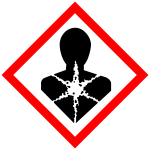
Health hazards
Substances and mixtures with various toxic effects on specific organs or chronic harmful effects.
Application:
- Respiratory sensitization, class 1
- Chemical products capable of causing germ cell mutagenicity, Classes 1A, 1B, 2С
- Carcinogenic chemicals, Classes 1A, 1B, 2С
- Chemicals with reproductive toxicity, classes 1A, 1B, 2С
- Toxic substances that have a damaging effect on target organs (with a single exposure), class 1, 2
- Toxic substances that have a damaging effect on target organs (with repeated exposure), class 1, 2
- Substances dangerous during aspiration, classes 1, 2
Examples:
